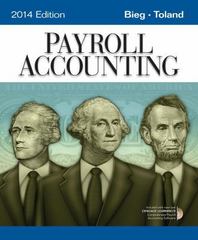Question
Adam and Brian organized X company 15 years ago, each contributing $10,000 and each receiving 100 shares of common stock. Five years ago in June,
Adam and Brian organized X company 15 years ago, each contributing $10,000 and each receiving 100 shares of common stock. Five years ago in June, X declared a one-for-one dividend payable in pure preferred stock (paying a 6% cumulative dividend on its par value, which equaled its then $100 of FMV). The value of the common stock after the distribution was $400 per share. In that year, X had accumulated E&P of $13,000 and current E&P of $3,000. In the current year, X has accumulated E&P of $28,000 and current E&P of $2,000. What are the tax consequences of the disposition of each situation below?
- In December of the current year, Adam sells all of Adam's preferred stock to Chris for $9,000; In June of the next year, Adam sells all of Adam's common stock to Donald for $50,000.
- Brian, who is Adam's son, took over as X's CEO five years ago. Adam gave 100 common shares of X to Brian four years ago. Adam dies on December 1 of the current year when the stock was worth $9,000. No election is made under section 2032. In March of the next year, Adam's executor sells the preferred for $10,000.
- In December of the current year, X redeems all of Adam's preferred stock in exchange for $9,000. In the next year, X redeems all of Brian's preferred stock fro $9,000; X's available E&P next year is $1,000, before reduction for distributions.
Assume that 305(b) does not apply.
Step by Step Solution
There are 3 Steps involved in it
Step: 1

Get Instant Access to Expert-Tailored Solutions
See step-by-step solutions with expert insights and AI powered tools for academic success
Step: 2

Step: 3

Ace Your Homework with AI
Get the answers you need in no time with our AI-driven, step-by-step assistance
Get Started


